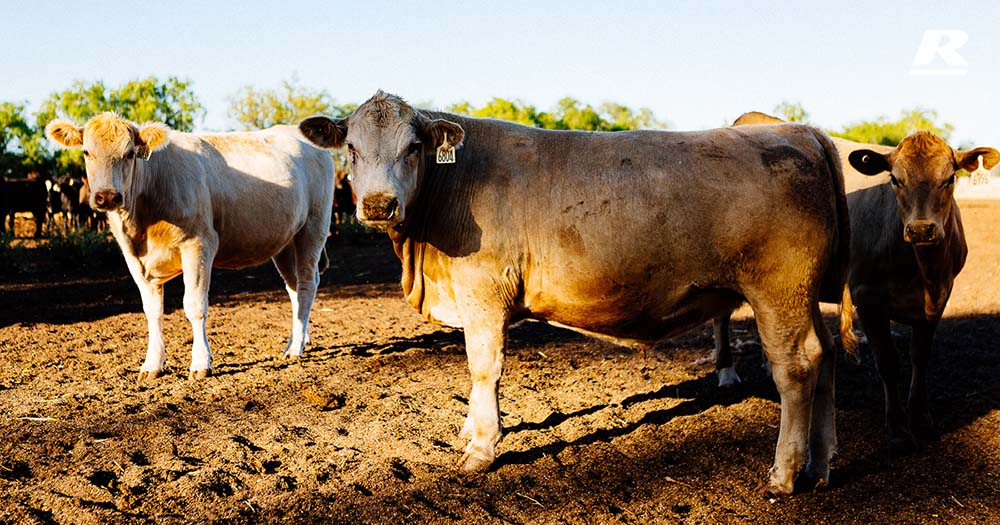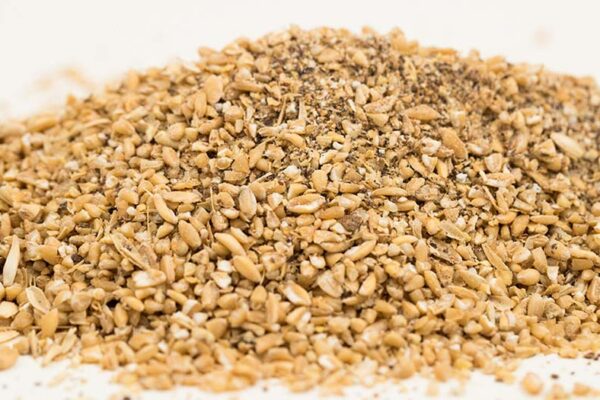What to put in your silo in 2022 – Part 2
What to put in your silo 2022 – Part 1 set the scene for understanding what you need to achieve lactation targets and drive more profit out of your business. Here, in Part 2, we focus on the importance of getting the pellet/crushed grain mix just right through considering energy sources, protein sources and the use of various additives.

Getting the pellet/crushed grain mix just right
My early nutrition mentor, US nutritionist Dr Bob Paton, used to tell me that 90% of a cow’s milk will come from getting the energy, protein, and fibre levels in the diet right. The next 5% will come from balancing the Ca and P. Finally, the final 5% of potential milk will come from fine-tuning everything else, including vitamins and trace minerals. In addition, I heard Dr Ian Lean speak at a dairy industry conference close to 20 years ago and he said that feed ‘quantity’ is king, and then ‘quantity’ runs second. Cows need to be full first. Then once they are full, we can worry about the quality of the cow food they are filling up with. If the herd isn’t full, feed conversion efficiency is likely to be compromised. Having said that, there is a difference between full and fed. Full suggests that the cow can’t fit anything else in. Fed, means that she can’t fit anything else in, but she has had the energy and protein that she needs to meet her milk production, fertility and health targets. This basically summarises the 2 main goals of feeding pellets/grain to cows at the moment:
- To complement the consumption of forages – both homegrown (as much as possible) and purchased – to the point where the cows are ‘full’
- To achieve desired levels of peak milk to set up the lactation, and also prevent health issues and ensure they get back in-calf – to the point where the cows are ‘fed’
With those opening comments, lets break down what the major focus points should be right now in terms of getting your pellet/crushed grain mix right: energy sources, protein sources, and the use of various additives.
Which energy sources (cereal grains) are best value at the moment?
The short answer is corn, followed by wheat, and then barley. It is unusual to see corn priced so similarly to wheat. Unfortunately, in this instance that is more to do with the price of wheat rising up to the price of corn, than corn coming down to meet the wheat price. Effectively we are feeding cereal grains for their starch content and starch is required by the cow to produce glucose, the cow’s energy currency. In the case of wheat and barley, most of the starch is broken down in the rumen by the bugs to propionate which is a glucose building block. This propionate is then transported to the liver and converted to glucose. The starch from corn is not broken down in the rumen to the same extent and so more of the starch is absorbed in the small intestine directly as glucose (bypassing the process of conversion in the liver). As a result, the glucose from corn will tend more towards weight gain, whereas the glucose from wheat will tend more towards milk production. For this reason, we wouldn’t want to go past 50% corn even though the value is higher in the corn than the wheat at the current pricing. To give you an idea, below is the comparison between the three grains in their starch and glucose content, along with the cost per g of glucose.
1 kg corn (65% starch) = 45.0 cents and yields 426 g glucose = 0.105 cents per g
1 kg wheat (65% starch) = 43.0 cents and yields 260 g glucose = 0.165 cents per g
1 kg barley (55% starch) = 42.0 cents and yields 234 g glucose = 0.180 cents per g
Aside from the best value, it is great to have a mix of cereal grains the pellet/crushed grain mix for a staged fermentation in the rumen (ie. Each grain breaks down at a slightly different rate so the impact on rumen pH will be less if there are several different grains included).

What about protein sources?
There isn’t much difference in price between lupins and canola meal right now, and there is not much difference in crude protein content (made up of both rumen degradable and rumen bypass protein) either. So what things might you think about when trying to work out how much of each to put in? The initial goal in terms of protein is to get as much rumen degradable protein in as possible to grow more rumen bugs who will ultimately digest forages for the cow. These rumen bugs themselves wash out of the rumen and are killed off and absorbed as amino acids by the cow as her major protein source (known as microbial crude protein). After rumen degradable protein we add in the bypass protein to top up the high producing cows (with high quality amino acids), drive dry matter intake (on forages – particularly on pastures), and encourage body condition donation (to push peak milk higher). On paper canola meal contains 70% rumen degradable protein (available to rumen bugs) but once the flow rate through the rumen increases (as grass comes in), this can drop as low as 50%. The alternative to being rumen degradable protein is bypass protein. For those feeding pellets, or that are brave enough on crushed grain mixes, urea is also an additional protein option. The proviso is that the diet also contains enough rapidly fermentable carbohydrates (sugars) to help the bugs use the non-protein nitrogen in the urea.
If you have high protein forages such as pasture (20% CP+) or a high quality legume hay (18-20% CP), you won’t need need any additional protein in the dairy to achieve a diet that is 16-17% CP overall – other than perhaps a bit of canola meal to drive appetite. However, if you have mostly homegrown silage (typically around 10-14% CP last season) and cereal hay (8-10% CP), you may need to feed a high protein pellet/crushed grain mix (18-20% +) to get enough protein in – particularly for fresh cows. Remember that you only get one chance each year to set them up for their lactation, and peak milk sets peak dry matter intake. So if your herd still peaks well despite a lack of pasture (compared to normal), they will fit a lot of grass in later on when it arrives. Therefore, now (when cows are fresh) is the time to push pellets/grain into the cows to make sure their diet is balanced and they achieve the desired level of peak. Then you can back the feed rate, and protein content, right off as pasture becomes available (and then plentiful) later on. If you have budgeted for a certain amount of grain for the year, it is worth considering feeding three quarters of their annual allocation during the first 3 months of lactation, and then the remaining quarter over the rest. This is how you are likely to get the biggest bang for the buck.
Click to find out about the essential additives should be in your feed? >
If you’d like to increase your livestock farming gains and get professional feeding advice. Call 1300 REID FEED or enquire here >